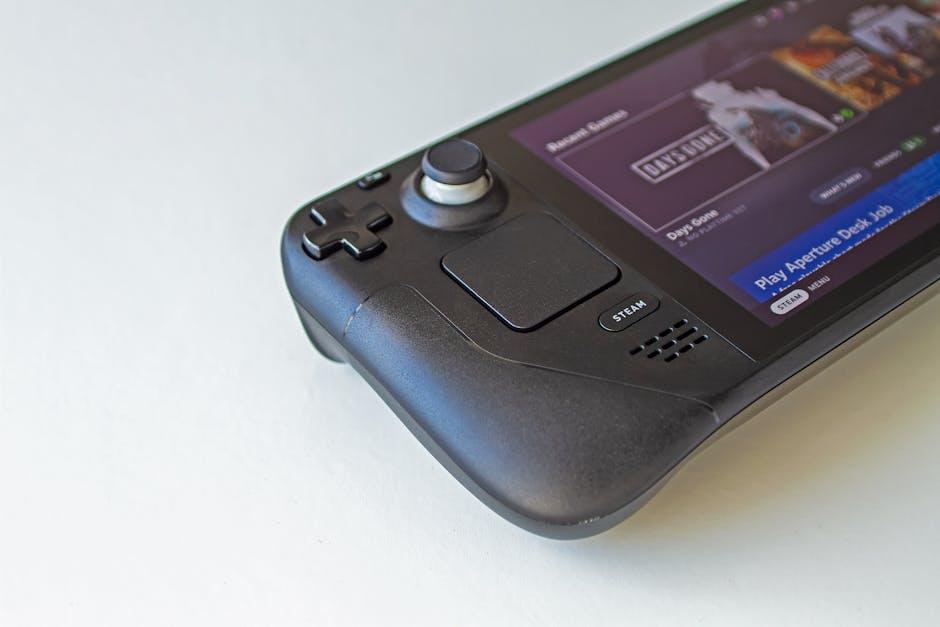In a world where handheld gaming has evolved beyond mere convenience to a full-throttle experience, the Steam Deck OLED emerges as a tantalizing contender in the battle for portable supremacy. Boasting vivid visuals and the promise of a more immersive gameplay experience, this upgraded version of Valve’s innovative gaming console begs the question: is it truly a console killer, poised to dominate the landscape, or merely a niche device catering to the discerning tastes of dedicated gamers? In this review, we dive deep into the features, performance, and overall appeal of the Steam Deck OLED to sift through the hype and discover whether it can stand shoulder to shoulder with established giants or if it ultimately serves the select few who dare to embrace its quirks. Join us on this exploration of gaming’s latest evolution, where we seek to untangle the potential of the Steam Deck OLED in a crowded market.
Unveiling the Display: Is OLED the Game Changer We Deserve?
The introduction of OLED technology in the Steam Deck has sparked a discussion that reaches beyond just the gaming community. Known for its vibrant colors and deep blacks, OLED presents a meaningful leap in display quality compared to traditional LCD screens. This new implementation not only enhances the visual experience with improved contrast ratios and faster response times but also addresses some of the common issues gamers face, such as eye strain during extended sessions. The rich color depth and consistency across various lighting conditions make it a compelling upgrade that could redefine handheld gaming.
However, the question remains: will this adaptation of OLED technology elevate the Steam Deck to a level where it becomes the essential device for gamers, or will it remain a niche product tailored for enthusiasts? On one hand, the advantages are clear:
- Superior image quality: Enjoy cinematic visuals.
- Power efficiency: Longer battery life during gameplay.
- enhanced gaming immersion: More vibrant graphics.
On the other hand, potential drawbacks like the risks of burn-in and higher manufacturing costs may deter some consumers. As we analyze user feedback and competing devices, it’s evident that while OLED undeniably adds value, the Steam Deck’s overall holistic performance will ultimately decide whether it becomes a console killer or simply a beloved gadget among a select group of gamers.

Performance under the Hood: Power Meets portability
The Steam Deck OLED manages to strike a fine balance between raw power and portability, offering gamers the ability to play their favorite titles without being tethered to a desk. Powered by a custom AMD APU, this device equips the handheld system with a remarkable graphics engine, ensuring that even demanding AAA titles run smoothly. Users can enjoy performance-enhancing features such as:
- High Fidelity Graphics: The OLED display enhances visuals with stunning colors and contrasts.
- Adaptive Performance: dynamic resolution scaling maintains fluid gameplay even at lower graphics settings.
- Robust Battery Life: Optimized performance extends gameplay beyond just a few hours.
With its compact design, ergonomically placed controls, and a lightweight build, the Steam Deck OLED doesn’t compromise on comfort, making long gaming sessions a joy rather than a chore. In terms of connectivity, it includes:
- Wi-Fi 6 Support: Enjoy seamless online gaming with reduced latency.
- Bluetooth Compatibility: Connect your favorite peripherals effortlessly.
- Expandable Storage: Keep your game library close at hand with SD card support.
| Feature | Description |
|---|---|
| Processor | Custom AMD APU |
| Display | 7-inch OLED, 1280×800 |
| Storage Options | 64GB eMMC / 256GB NVMe / 512GB NVMe |

Game Library and Compatibility: A Nerd’s paradise or a Limited Playground?
The Steam Deck OLED is a treasure trove for gamers, boasting an extensive library that makes it feel like a portal to a sprawling universe of entertainment. Compatibility is where this device truly shines, allowing players to dive into a vast selection of titles, from popular AAA games to beloved indie gems. Here’s a speedy overview of what the Steam Deck OLED offers:
- Steam Library Access: With the ability to access the entire Steam library, players can enjoy thousands of titles at their fingertips.
- Indie Game Haven: The device encourages the explosion of indie games, providing opportunities for smaller developers to shine.
- Cross-Platform Play: Seamless gameplay across different devices, promoting collaborative play experiences.
- Game Streaming Compatibility: With apps like steam Link, gamers can stream their favorite games directly from their PCs.
However, while the sheer volume of options is exhilarating, some users may find limitations lurking in the shadows. Certain games, especially those with demanding graphics or specific hardware requirements, may not perform optimally. Here’s a comparison table to illustrate common compatibility concerns:
| Game Title | Performance on Steam Deck OLED | Notes |
|---|---|---|
| The Witcher 3 | Good, but some graphical settings may need adjustment | Requires tweaks for optimal performance |
| Hollow Knight | Excellent | Runs smoothly with no adjustments needed |
| Cyberpunk 2077 | Playable, but not ideal | Heavy on resources; may lead to frame drops |
While the Steam Deck OLED offers a nerd’s paradise with its assorted game library, the playing field is limited for some specific titles, leaving dedicated gamers to navigate a landscape that can be both inviting and demanding.Embracing this balance between vast potential and occasional restrictions is part of the journey with this versatile console.

Battery Life and Usability: Balancing Duration with Delight
When assessing the steam Deck OLED, battery life emerges as a pivotal element that shapes the overall user experience. On one hand, gamers eagerly anticipate prolonged sessions without the anxiety of recharging. On the other, the push for vibrant, high-definition visuals can demand extra juice, causing some to question whether longevity can coexist with stunning graphics. Users are left balancing performance against playability, often leading to the realization that power-saving settings can be a gamer’s best friend. Here’s a quick overview of factors influencing battery life:
- Display Brightness: Higher settings can drain the battery faster.
- game Complexity: Intensive titles tend to consume more power.
- Connectivity: Wi-Fi and Bluetooth usage impact longevity.
Beyond mere endurance, usability plays a crucial role in defining how enjoyable the device is. The beauty of a well-optimized user interface means that players can seamlessly navigate through their libraries, adjusting settings on the fly without distraction.It’s all about creating an ecosystem that invites exploration and immerses users in their gaming worlds. To illustrate the balance between battery life and usability, consider the following:
| Factor | Impact on Battery Life | Usability Enhancement |
|---|---|---|
| Brightness Control | High = Low | Easy navigation in dark settings |
| Performance Mode | Enhanced = Reduced | Smoother frame rates for intense gameplay |
| Game streaming | High = Draining | Access to vast libraries without download |
In Conclusion
the Steam Deck OLED emerges as a compelling evolution of its predecessor, shining brightly with its stunning visuals and refined performance. While it certainly captivates the gaming aficionado with its vibrant display and enhanced ergonomics, the question of whether it is indeed a true “console killer” or simply a niche device for devoted gamers remains open to interpretation. For some, it embodies the ideal portable gaming solution, while for others, it may feel tailored to a specific audience with particular tastes.
As portable gaming technology continues to advance, the Steam Deck OLED serves as a notable contender in the ever-evolving landscape of gaming devices. Whether you view it as a versatile handheld marvel or an intricate gadget designed for the tech-savvy, it’s clear that Valve has crafted a device that pushes boundaries. Ultimately, as gamers weigh their options, they will have to decide for themselves: does the allure of this OLED powerhouse outweigh its market niche? One thing is certain—the conversation around the Steam Deck OLED will carry on, fueling both debate and intrigue in the gaming community for quite some time. Happy gaming!




